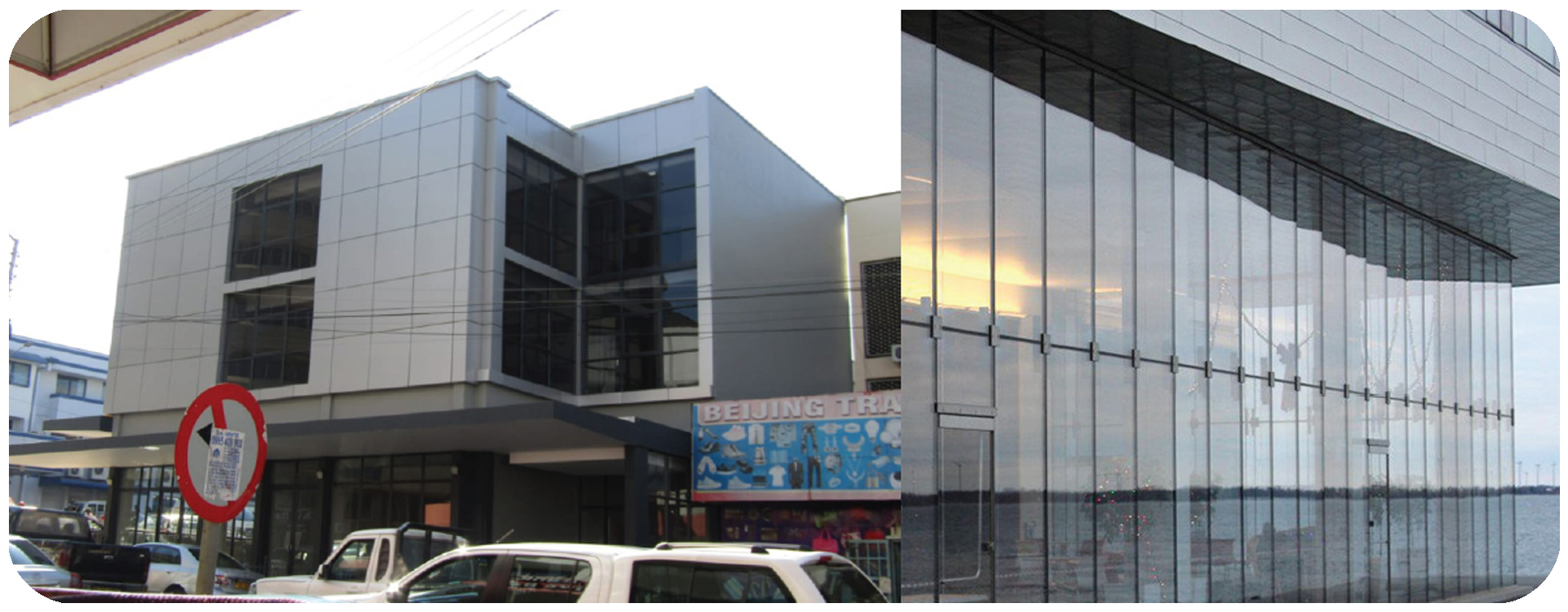
Aluminium Panel Cladding has fast become on of the most popular ways to accentuate the facade of any modern commercial structure. Architects and designers have a multitude of options, when it comes to cladding materials. One of the most popular choices is that of aluminium composite panels.
Cladding essentially protects the exterior and the frame of the building, and are also used extensively as an interior finish in commercial or public buildings. Besides the protection a cladding system has to offer, it also increase the aesthetic appeal of a building.
Cladding essentially protects the exterior and the frame of the building, and are also used extensively as an interior finish in commercial or public buildings. Besides the protection a cladding system has to offer, it also increase the aesthetic appeal of a building.
Panel Cladding is a lightweight, enamelled finish and water-tight interlocking system. The panel components are the 150 and 200mm wide interlocking panels which are supported on stringers. Together with various corners, joints and accessories, the 150 and 200F Systems can form closed facades, fascias and soffits in a wide range of colours.
Our façade cladding solutions add design sophistication to your buildings, enhancing them with a modern, lightweight and low maintenance envelope.
Our façade cladding solutions add design sophistication to your buildings, enhancing them with a modern, lightweight and low maintenance envelope.
Curtain walls gives a clean, sophisticated, and unique appearance, which is now associated with contemporary design. Our robust yet lightweight solutions offer designers the flexibility to create imaginative, high performance structures. Curtain walling systems are increasingly specified in the world’s most modern commercial and industrial buildings. In fact they have come to be expected of many buildings today, not only because of their numerous practical advantages but also because of their appearance. Curtain walls are installed on the outside of a building, on their own frame.
Though the frame is secured to the main building’s slabs at certain points, curtain walls stand entirely on their own structure. They are installed from the outside and the effect is an outside view that can almost look like seamless glass.
Though the frame is secured to the main building’s slabs at certain points, curtain walls stand entirely on their own structure. They are installed from the outside and the effect is an outside view that can almost look like seamless glass.
There are two types of curtain walls: Pressure glazed and Flush glazed versions.
In a flush glazing (sometimes called pocket glazing) wall you see just the glass outside, with a little silicon join between the panes. The glass is set in a recess in a frame; If any stops are used they are also recessed; so the glazing is flush with the frame jamb surface. On a pressure glazed curtain wall, the aluminium frame holding the glass is exposed, so you see the framing from the outside. The system is used extensively in high – performance commercial applications requiring durability, sound weathering characteristics, aesthetic impact and demanding technical performance.
In a flush glazing (sometimes called pocket glazing) wall you see just the glass outside, with a little silicon join between the panes. The glass is set in a recess in a frame; If any stops are used they are also recessed; so the glazing is flush with the frame jamb surface. On a pressure glazed curtain wall, the aluminium frame holding the glass is exposed, so you see the framing from the outside. The system is used extensively in high – performance commercial applications requiring durability, sound weathering characteristics, aesthetic impact and demanding technical performance.
